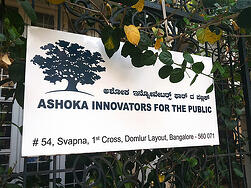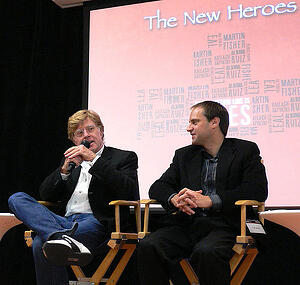Volunteerism is not only great for the community, but it can also benefit young volunteers by creating opportunities for scholarships. Several programs exist to reward students for their service to the community and help them finance their higher education. Here are a few examples of volunteer scholarships:
- The Prudential Spirit of Community Award “is the United States' largest youth recognition program based exclusively on volunteer community service.” This award is available to students in grades 5-12 who have engaged in community service and leadership over the last year. The deadline for applications this year is November 5th, and the winners will be announced on February 11th, 2014. Winners are selected on the local, state, and national level. A special awards ceremony for state winners is held in Washington, DC. A $5,000 award is given to winners who progress to the national level. The Spirit of Community program encourages service on an international platform, awarding students in Japan, South Korea, Taiwan, Ireland, India, and China.
- The Best Buy Scholarship Program awards 1,100 scholarships each year to high schools students who show strength in both academics and volunteerism. The scholarship money is given for higher education. In addition to academic records and extracurricular activities, students are asked to provide a record of their service-learning hours when applying.

- The Gloria Baron Prize for Young Heros annually recognizes 25 outstanding young leaders. The founder of the Barron Prize, author T. A. Barron, named it after his late mother Gloria. Gloria Barron was a teacher, a mother, and an active member of her community. She dedicated her life to young people, encouraging her students to write their stories down and urging them to do something to better the world. She believed in the power of the individual, particularly a young individual's ability to better the greater community. Young people across America can be nominated for the award after completing a service project that makes "a significant positive difference to people and our planet." Nominations are accepted until April 30, and winners are announced late September. Of the 25 selected, the top ten receive $5,000 to be applied to their higher education or to their service project, a recognition plaque, a signed copy of "The Hero's Trail" by T.A. Barron, and other awards. The Barron Prize seeks to recognize the inspiring work of young people.
- The retail store Kohl’s offers the Kohl's Cares Scholarship Program for students aged 6-18 who have not yet graduated from high school. The program has recognized 17,500 students and granted over three million dollars in scholarships. Students are nominated and selected based on the impact their volunteer hours had on the community. Winners from each store receive a $50 Kohl's Gift Certificate. The most meaningful projects are selected from each region and awarded $1000, and national winners receive a $10,000 scholarship plus a donation of $1000 to a nonprofit valued by the student. The award monies for region and national winners are used toward the student's higher education. Nominations for the 2014 Kohls Cares Scholarship Program will be open from January 31-March 14, 2014.
These are just some examples of scholarships for volunteers provided by private institutions, but several publicly funded programs also exist to recognize volunteerism:
Several Government scholarships exist to award students for their service and help them pay for higher education. AmeriCorps, a branch of the Corporation for National and Community Service*, encourages young people to dedicate a year to service working with a nonprofit, school, public agency, or community. Students earn valuable skills, become civically minded, and gain experience valued in the workforce—where they are heading after their year of service. For their volunteer work, students receive a small stipend to cover living expenses, since in dedicating all their time to volunteering, they have no other source of income. They also receive benefits such as healthcare and childcare during their time as a volunteer. Upon finishing a term of volunteerism, students are eligible to apply for the Segal AmeriCorps Education Award*, which awards volunteer scholarship money to be put towards paying for higher education or repaying student loans. The scholarship award is valued at the maximum Pell Grant during the year of service. Members of AmeriCorps can receive up to two Education Awards if they volunteer for more than one term. This program not only encourages young people to serve and become active and dedicated to a cause, it also helps them pay for their higher education. - The President’s Volunteer Service Award*, previously discussed on NobleHour, also recognizes volunteers who, alongside their daily lives, track hundreds of hours helping in the community. Applicants are asked to produce some type of log as proof of their volunteer hours. Tracking volunteer hours on using NobleHour’s hour-tracking software is a way to accomplish this.
*For the time being, volunteers are unable to apply for these programs and awards due to the federal government shutdown. More information about the effects of the government shut down can be read in the Corporation for National and Community Service’s contingency plan.











